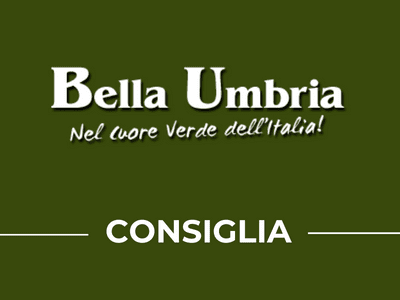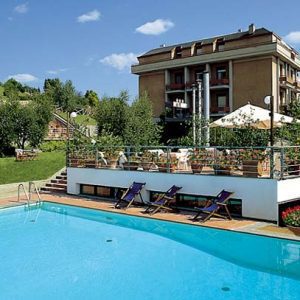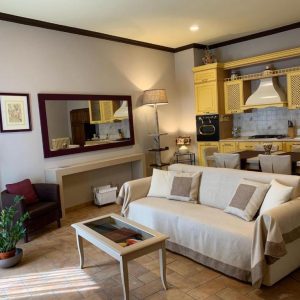▌ Alla scoperta di Castel Viscardo
#BELLAUMBRIA
{“translation”:[{“lang”:”it”,”content”:”
Situato nella valle del Paglia, Castel Viscardo ha origini nel XIII secolo, quando Guiscardo da Pietrasanta, nipote di Urbano IV, diede inizio alla costruzione del castello.
Ed è proprio sul castello, noto come “Castello di Madonna”, che gravita una leggenda suggestiva: quella della “dama bianca”, una nobildonna a cui il castello appartenne, la quale si aggira ancora nelle sue stanze nelle notti di plenilunio. Il castello ha la forma di un poligono irregolare con un largo fossato interrotto da un ponte dal quale si accede ad una elegante entrata in stile barocco, con un arco a tutto sesto adornato da nicchie laterali con statue e sormontato da un orologio settecentesco. Le possenti mura perimetrali sono in pietra locale, mentre le finestre sono contornate da cornici in pietra di Bagnoregio.
Interessante la chiesa di Maria SS. Annunziata (1682): lungo la navata si possono ammirare quattro cappelle, arricchite da dipinti di Carlo Maratta (1683-84), del tedesco Wernle, pittore al servizio degli Spada, e del Bernabei di Perugia.
Da citare, la Chiesa parrocchiale, nella quale si possono ammirare un crocifisso in avorio, donato dal Re Sole, Luigi XIV, ad un nunzio apostolico della famiglia Spada, e la bandiera di una nave turca, bottino di guerra di una spedizione di un altro componente degli Spada.
A Castel Viscardo, nel XVI secolo, era rilevante la produzione di laterizi: ne sono testimonianza le fornaci, che hanno prodotto materia prima per lavori di restauro di importanti monumenti come il Colosseo, Piazza del Campo a Siena ed altri.
“},{“lang”:”fr”,”content”:”Situé dans la vallée du Paglia, Castel Viscardo a des origines datant du XIIIème sipcle, quand Guiscardo da Pietrasanta, neveu d’Urbano IV, donna le feu vert au commencement de la construction du château.
Et c’est justement à propos du château que l’on trouve une légende suggestive: celle de la “dame blanche”, une noble dame à qui le château appartint, laquelle tourne encore dans les pièces les nuits de pleine lune.
A citer, l’église paroissiale, dans laquelle on peut admirer un crucifix en ivoire, donné par le Roi Soleil, Louis XIV, à un nonce apostolique de la famille Spada, et le drapeau d’un bateau turc, butin de guerre d’une expédition d’un autre membre des Spada.
A Castel Viscardo, au XVIème siècle, était importante la production de briques: en témoignent les fours, qui ont produit la matière première pour les travaux de restauration de monuments importants comme le Colisée, Piazza del Campo à Sienne et d’autres.
“},{“lang”:”en”,”content”:”Situated in the Paglia Valley, Castel Viscardo has origins going back to the 13th Century, when Guiscardo from Pietrasanta, grandson of Urbano IV, began the construction of the castle.
A suggestive legend is associated right on the castle: the legend of the “dama bianca”, a noblewoman to whom the castle belonged, who still wanders around in the rooms during the nights of a full moon. Of note, the parish Church, within which one can admire an ivory crucifix, which was donated, by the King of the Sun, Luigi XIV, to an Apostolic Delegate of the Spada family, and a flag of a Turkish ship, which was a war prize of an expedition of another member of the Spada family.At Castel Viscardo, during the 16th Century, the production of bricks was very important: the Fornaci are an evidence of this fact, which have produced raw materials for the restoration projects of important monuments such as the Colosseo, Piazza del Campo at Siena, and others.
“},{“lang”:”es”,”content”:”Situated in the Paglia Valley, Castel Viscardo has origins going back to the 13th Century, when Guiscardo from Pietrasanta, grandson of Urbano IV, began the construction of the castle.
A suggestive legend is associated right on the castle: the legend of the “dama bianca”, a noblewoman to whom the castle belonged, who still wanders around in the rooms during the nights of a full moon. Of note, the parish Church, within which one can admire an ivory crucifix, which was donated, by the King of the Sun, Luigi XIV, to an Apostolic Delegate of the Spada family, and a flag of a Turkish ship, which was a war prize of an expedition of another member of the Spada family.At Castel Viscardo, during the 16th Century, the production of bricks was very important: the Fornaci are an evidence of this fact, which have produced raw materials for the restoration projects of important monuments such as the Colosseo, Piazza del Campo at Siena, and others.
“},{“lang”:”de”,”content”:”Situated in the Paglia Valley, Castel Viscardo has origins going back to the 13th Century, when Guiscardo from Pietrasanta, grandson of Urbano IV, began the construction of the castle.
A suggestive legend is associated right on the castle: the legend of the “dama bianca”, a noblewoman to whom the castle belonged, who still wanders around in the rooms during the nights of a full moon. Of note, the parish Church, within which one can admire an ivory crucifix, which was donated, by the King of the Sun, Luigi XIV, to an Apostolic Delegate of the Spada family, and a flag of a Turkish ship, which was a war prize of an expedition of another member of the Spada family.At Castel Viscardo, during the 16th Century, the production of bricks was very important: the Fornaci are an evidence of this fact, which have produced raw materials for the restoration projects of important monuments such as the Colosseo, Piazza del Campo at Siena, and others.
“}]}





